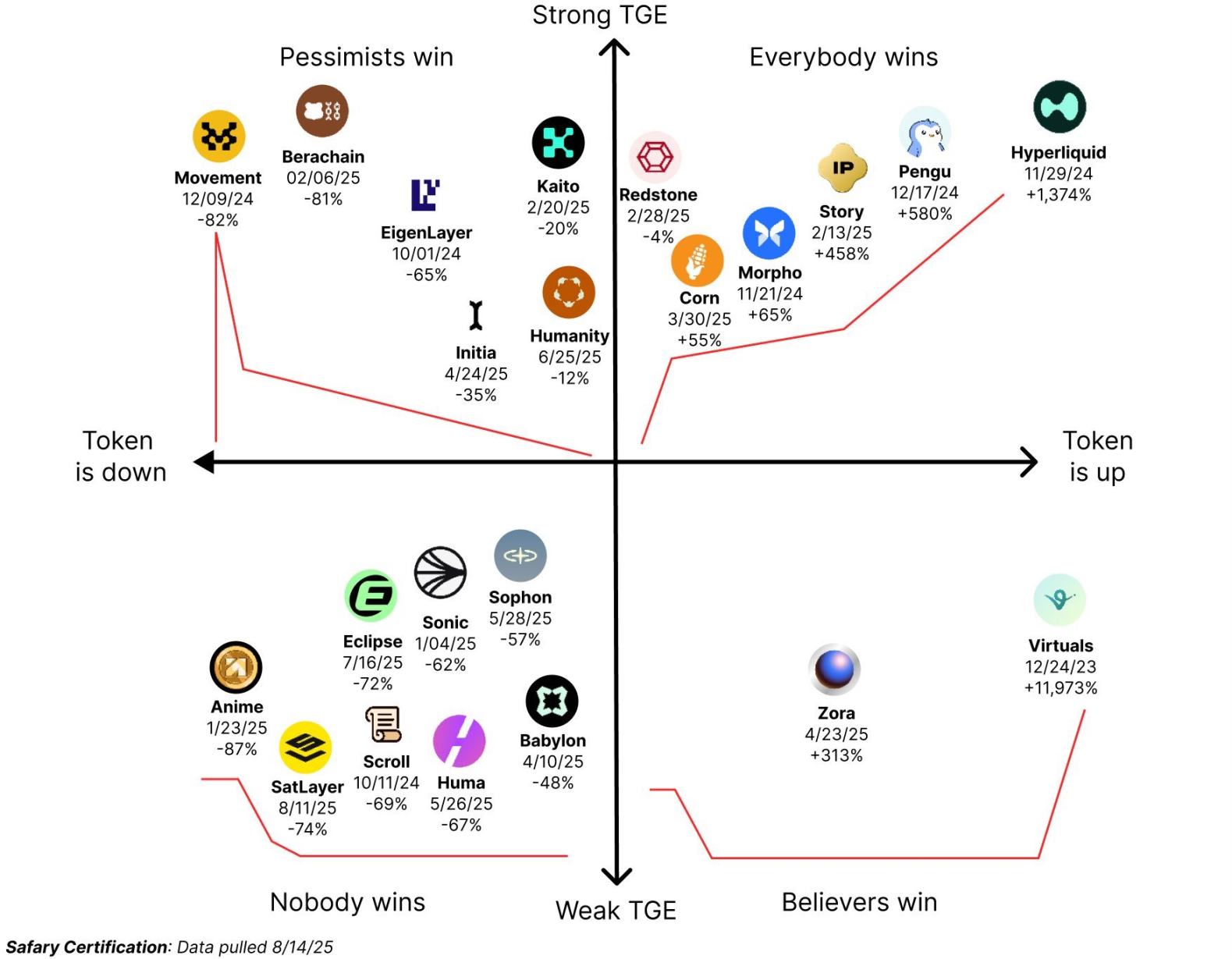Author: Haotian
I saw a picture this morning and it gave me some thoughts to share:

1) Choosing a TGE in a time window with abundant liquidity is very important, so important that it can ignore the fundamentals of the project.
For example, $Pengu, an NFT community MEME token, was launched on December 17 last year when liquidity was very abundant, but its performance was better than most projects. $BABY and $HUMA, which are projects with technical narratives and VC layout endorsements, were launched in April and May of this year when liquidity was relatively exhausted, and their performance was very poor.
2) Projects tend to go online in large groups, but it is necessary to consider whether market liquidity can sustain them.
For example, in November and December of last year, projects like Hyperliquid, Movement, Pengu, and Morpho emerged. Despite the mixed performance, most of them eventually withdrew. Meanwhile, in April and May of this year, Babylon, Initia, Zora, Huma, and Sophon all emerged in large numbers, but they all suffered from insufficient liquidity and underperforming.
3) During the TGE time window, there may also be some projects that reach their peak as soon as they launch.
Some projects take advantage of ample market liquidity and retail investor Fomo (likely a term or market capitalization) to launch their TGEs, ignoring their own weak fundamentals. For example, Dongxiang and Berachain both saw strong Fomo enthusiasm at their openings, only to see their stock prices plummet. This simply demonstrates that market liquidity dividends, when not backed by fundamentals, can actually accelerate the decline of some projects.
4) In the wrong TGE time window, for some projects that have panic in fundamentals but are psychologically viable, it is actually a golden opportunity to discover value.
$ZORA is a prime example, launching during the darkest market and most illiquid times, becoming the sole winner among its group of projects. Similar was the earlier $Virtual, which launched during the darkest times of the year, yet consistently delivered exceptional fundamental performance, leading to waves of Solana AI agent enthusiasm and ultimately allowing its collective believers to prevail.
5) Regardless of the strength or weakness of the exit window, there will always be projects with excellent fundamentals that emerge in the end.
For example, Hyperliquid was able to build a large community of supporters, leading a wave of Perp Dex narrative craze, and the price of $HYPE also climbed step by step; @flock_io
Furthermore, despite launching at the height of last year's Trump's massive liquidity grab, with $FLOCK's minimum circulating market capitalization plummeting to an exaggerated 3 million, $FLOCK achieved a near-exchange listing grand slam thanks to its outstanding fundamentals, ensuring its believers prevailed in the end. For most retail investors, understanding the importance of the TGE window and adopting differentiated strategies: chasing highs and entering and exiting quickly during strong TGEs; focusing on investment research during weak TGEs, identifying undervalued, high-quality indices, and holding them for the long term—all have the potential to ultimately emerge as winners, albeit with some difficulty.







